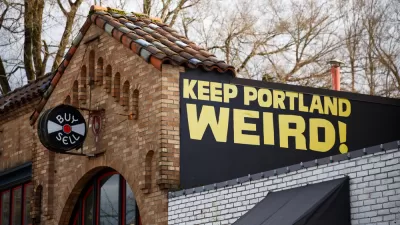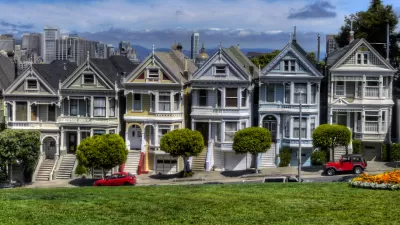Despite the intentions of the nation's fair housing laws, neighborhoods in the United States continue to segregate by race.

William H. Frey examines contemporary neighborhood residential segregation, using Census Bureau American Community Survey data from the 2015-2019.
According to Frey, the data show that "despite the fact that people of color account for the vast majority of recent U.S. population growth, white residents almost everywhere— including those in the nation’s most diverse metropolitan areas—continue to reside in mostly white neighborhoods."
And while neighborhood segregation has declined since the 1960s ("albeit modestly," writes Frey), "substantial levels of neighborhood segregation persist for Black residents and—to a sizable, though lesser extent—for Latino or Hispanic and Asian Americans."
Put another way: "Just as white neighborhoods continue to remain 'whiter' than their surrounding metropolitan areas, it’s also the case that neighborhoods where the average Black, Latino or Hispanic, and Asian American populations reside continue to include overrepresentations of those groups."
The source article includes a lot more data, analysis, and infographics.
FULL STORY: Neighborhood segregation persists for Black, Latino or Hispanic, and Asian Americans

Alabama: Trump Terminates Settlements for Black Communities Harmed By Raw Sewage
Trump deemed the landmark civil rights agreement “illegal DEI and environmental justice policy.”

Study: Maui’s Plan to Convert Vacation Rentals to Long-Term Housing Could Cause Nearly $1 Billion Economic Loss
The plan would reduce visitor accommodation by 25% resulting in 1,900 jobs lost.

Planetizen Federal Action Tracker
A weekly monitor of how Trump’s orders and actions are impacting planners and planning in America.

Waymo Gets Permission to Map SF’s Market Street
If allowed to operate on the traffic-restricted street, Waymo’s autonomous taxis would have a leg up over ride-hailing competitors — and counter the city’s efforts to grow bike and pedestrian on the thoroughfare.

Parklet Symposium Highlights the Success of Shared Spaces
Parklets got a boost during the Covid-19 pandemic, when the concept was translated to outdoor dining programs that offered restaurants a lifeline during the shutdown.

Federal Homelessness Agency Places Entire Staff on Leave
The U.S. Interagency Council on Homelessness is the only federal agency dedicated to preventing and ending homelessness.
Urban Design for Planners 1: Software Tools
This six-course series explores essential urban design concepts using open source software and equips planners with the tools they need to participate fully in the urban design process.
Planning for Universal Design
Learn the tools for implementing Universal Design in planning regulations.
Caltrans
Smith Gee Studio
Institute for Housing and Urban Development Studies (IHS)
City of Grandview
Harvard GSD Executive Education
Toledo-Lucas County Plan Commissions
Salt Lake City
NYU Wagner Graduate School of Public Service





























